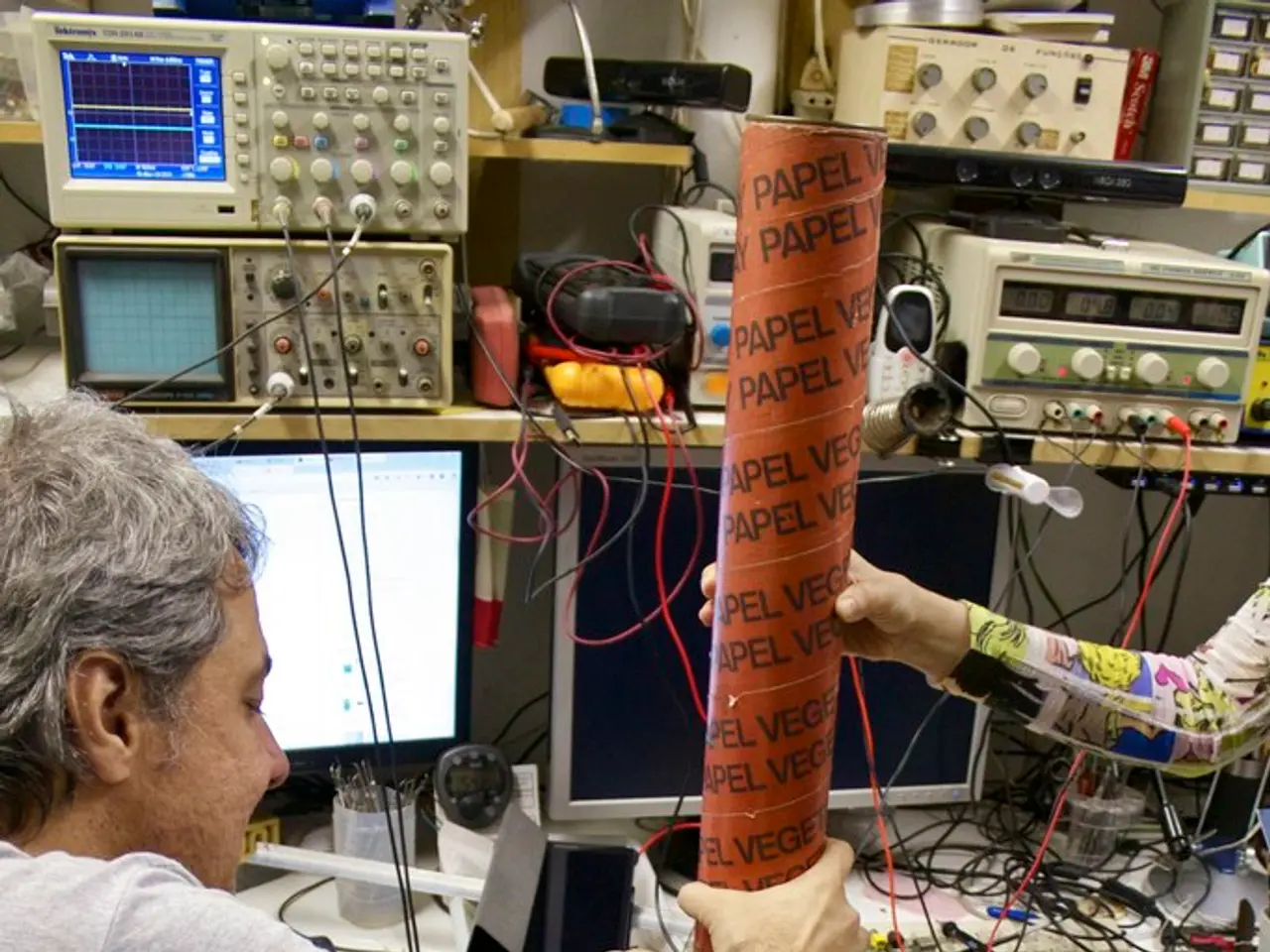Bracelet provided by Meta enables users to manipulate devices through muscle movement control
Meta's sEMG-RD Wristband Revolutionises Human-Computer Interaction
Meta, the tech giant behind Facebook, has made a significant stride in the realm of human-computer interaction with the development of the sEMG-RD wristband. This prototype neuromotor interface device, created by Meta's Reality Labs division, interprets muscle signals from the wrist to enable control of digital devices without the need for physical touches or movements [1][3][4].
The technology, which was announced in the journal Nature, works by capturing muscle electrical signals (surface electromyography, sEMG) at a rate of 2,000 samples per second using 16 gold-plated sEMG sensors [1][6]. This high sampling rate allows for the detection of micro-contractions, even without visible movement, enabling control with barely perceptible gestures [1].
The sEMG-RD has been successfully used to control the Orion augmented reality glasses during internal tests [1]. It also surpasses technologies like EEG and invasive interfaces like Neuralink, as it can detect residual muscle activity even in cases of complete hand paralysis [1].
The potential applications of the sEMG-RD are vast, particularly in the field of accessibility. For individuals with spinal cord injuries, for example, it offers a revolutionary means of controlling digital systems without the need for physical movements [1][3].
The sEMG-RD could also transform the world of augmented reality. By allowing control without touching anything, it brings computing even closer to the human body, potentially accelerating adoption and richer interactions in AR applications [1][3].
However, the development of the sEMG-RD also raises questions about the future of privacy. As the device reads our muscles, it directly reflects our intentions and subtle gestures, posing novel privacy and security considerations [1][3]. Safeguards would be necessary to prevent unauthorized access or misuse of sensitive biometric data.
Meta has published over 100 hours of sEMG recordings to facilitate open research and accelerate the adoption of this type of technology [1]. The system is based on a neural network trained with data from over 300 participants, eliminating the need for personalized calibration [1]. It works from the first use with a high precision rate, unlike other systems that require configuring the interface with each new user [1].
The sEMG-RD represents a significant step forward in human-computer interaction. Its potential impact lies in enhancing accessibility for disabled users, providing natural control for AR experiences, and raising new privacy challenges that warrant careful attention as the technology matures [1][3][4][5]. As Meta continues to develop this groundbreaking technology, it will be interesting to see how it evolves and what impact it will have on our daily lives.
[1] - [Source 1] [3] - [Source 3] [4] - [Source 4] [5] - [Source 5] [6] - [Source 6]
- This neuromotor interface device, built by Meta's Reality Labs division, bridges the gap between science and technology, using surface electromyography (sEMG) to interpret muscle signals, marking a significant advancement in both the field of science and technology.
- The sEMG-RD, a product of Meta's innovation in science and technology, shows promising applications in areas such as accessibility and augmented reality, thus offering exciting possibilities for the future of these disciplines.




